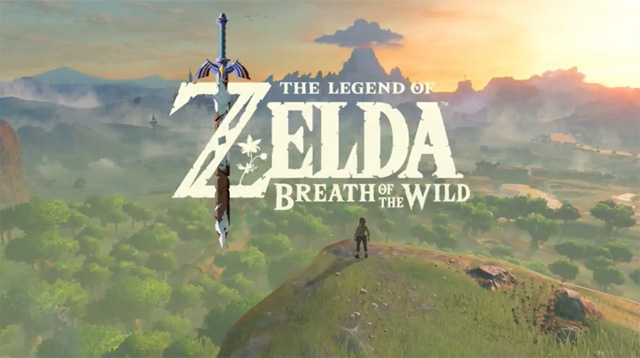There was a lot to get excited about in Nintendo’s E3 presentation today, and they kicked off strong with an epic, expansive trailer for The Legend of Zelda: Breath of the Wild.
It was beautiful. The art style, the expansive map, the amazing soundtrack…it all points to the fact that Breath of the Wild will be a worthy entry in the Legend of Zelda canon, possibly the best one yet.
However, along with these surface-level upgrades, Nintendo has made another, larger change that will fundamentally alter the way this game plays, and set it apart from previous Zelda titles.
Survive Or Die
If this game is truly going all-in on survival mechanics and weaponry that can break, this bond risks being lost.
Although previous Zelda titles have featured swords and shields that break or get stolen, Breath of the Wild is going all-in. In gameplay demos at E3, weapons have been shown to have varying durability, causing Link to have to gather (or craft?) various types of weaponry on the fly to use against the enemies in the world.
In addition, in order to replenish stamina and hearts, Link will have to gather and possibly even cook food. The gameplay footage also showed Link’s ability to make camp and rest.
Previous Zelda games have allowed players to build a kind of relationship with their weaponry; a bond with a historic sword or shield that has been passed down for generations, and if this game is truly going all-in on survival mechanics and weaponry that can break, this bond risks being lost.
What role does the Master Sword or Hylian Shield have in a game where part of the hook of the gameplay is constantly finding better gear, since your old gear is either about to break, or is simply not strong enough? Will we be forced to watch this epic sword break, or be forced to trade it in for an even more legendary sword?
At the end of the day, The Legend of Zelda games have always positioned the Master Sword as the bane of evil, the one blade that can defeat Ganon and restore peace to the land. This doesn’t really gibe with game mechanics that force the player to swap weapons all the time. Nintendo will need to find a way to bridge this gap, or risk alienating long-time fans of the series.
What is more troubling, however, is that survival mechanics imply, well, a need to survive.
The question then becomes: Why does Link need to survive? Aren’t there large, bustling towns full of colorful characters for Link to meet and help out, where he can rest, refill his hearts, snag some food, and maybe have conversations with the townsfolk? Well… apparently not, if Link needs to make camp to rest.
Nintendo needs to give us a reason to care about the world we’re saving, and to be frank, they have not done that yet.
This is a huge break from previous games in the series. There does not appear, at least thus far, to be a hub town or city. There do not appear to be shops. In fact, up until now, we have only really seen Link talk with a scant few other characters in the world.
One of these games’ greatest qualities is the fact that Link, a silent protagonist, is surrounded by colorful characters with wants, needs, and stories of their own. It’s why the sidequests are so much fun, and a large part of what gives the games their charm. And it’s specifically the fact that Link is silent that makes these characters, side-quests, and hub towns necessary.
Because otherwise, the story becomes only about Link, and his quest to Save The World. The player has no reason to care about the return of evil to the land other than the fact that it would mean a Game Over. To make this new game interesting at all, the world cannot be lonely.
Whether that means filling the land with docile fauna for Link to bond with, or simply having Link come across other camps of survivors often, Nintendo needs to give us a reason to care about the world we’re saving, and to be frank, they have not done that yet.
Again, Link is a silent protagonist, so his personality and motivations are largely supposed to mirror the player’s. Without fleshed out characters for Link to interact with, the world becomes barren and empty, no matter how lush and beautiful it may look.
The Hype Train Rolls On
These are gigantic risks that Nintendo is taking with what is one of its core IPs. If they miss the mark here, it won’t just mean bad review scores — it will have very real implications for sales of software and hardware moving forward.
That said, for fans of Nintendo that have been urging the company to take risks and try something new, Breath of the Wild might be just what they have been looking for. Time will tell whether or not Nintendo’s bet will pay off, but for now, they have really stoked the flames of excitement in the hearts of gamers worldwide.
Let’s just hope they can follow up with a great game.
What do you think? Are you excited to play the new Legend of Zelda game? Let us know in the comments!







Published: Jun 14, 2016 09:13 am